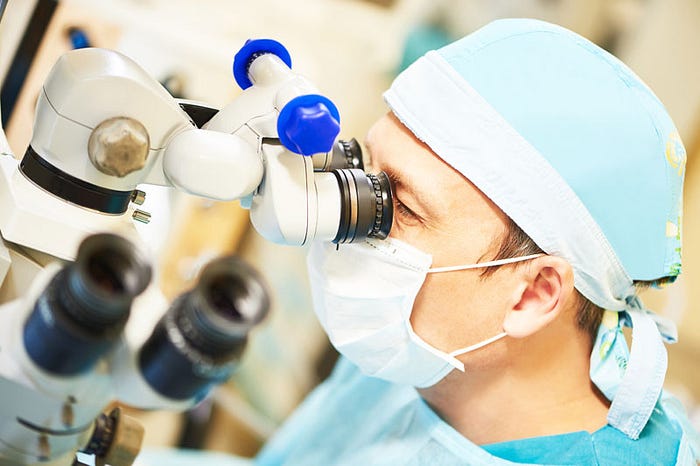
Top 5 Advancements in Cataract Surgery
Introduction:
Cataract surgery has evolved significantly over the years, transforming the lives of millions worldwide by restoring vision and improving quality of life. In this article, we delve into the top 5 advancements in cataract surgery, showcasing the latest innovations that have revolutionized the field of ophthalmology. From cutting-edge technologies to groundbreaking procedures, these advancements have paved the way for more precise, safer, and effective cataract treatments. Whether you’re a patient seeking information or a medical professional looking to stay abreast of the latest developments, this article provides valuable insights into the world of cataract surgery, Cataract Treatment In Ghatkopar.
Top 5 Advancements in Cataract Surgery
1. Femtosecond Laser-Assisted Cataract Surgery (FLACS)
Femtosecond Laser-Assisted Cataract Surgery (FLACS) represents a groundbreaking advancement in cataract surgery. This state-of-the-art technology utilizes femtosecond lasers to perform key steps of the cataract removal process, enhancing precision and predictability. The laser is used to create corneal incisions, perform capsulotomies, and fragment the cataract, reducing the reliance on manual techniques. FLACS offers several advantages, including decreased phacoemulsification energy, improved centration of intraocular lenses (IOLs), and enhanced postoperative visual outcomes. Additionally, it allows for customized treatment plans tailored to each patient’s unique eye anatomy, optimizing surgical results.
2. Premium Intraocular Lenses (IOLs)
Premium intraocular lenses (IOLs) have transformed cataract surgery from merely removing a cloudy lens to addressing various visual conditions, such as presbyopia and astigmatism. Traditional monofocal IOLs only provide clear distance vision, necessitating the use of reading glasses for near tasks. However, premium IOLs, such as multifocal, accommodating, and toric lenses, offer the ability to correct multiple vision issues simultaneously. Multifocal IOLs, for instance, allow patients to see both near and distant objects without dependence on glasses. This advancement has significantly improved postoperative patient satisfaction and reduced the need for glasses after cataract surgery, Cataract Treatment In Ghatkopar.
3. Ocular Coherence Tomography (OCT)
Ocular Coherence Tomography (OCT) has become an indispensable tool in modern cataract surgery. This non-invasive imaging technology provides high-resolution cross-sectional images of the eye, aiding surgeons in preoperative planning and postoperative assessment. Cataract Treatment In Ghatkopar, OCT allows for detailed visualization of the cornea, lens, and retina, helping to identify any underlying conditions that may influence surgical decision-making. By detecting potential complications and ensuring precise measurements, OCT enhances the safety and accuracy of cataract surgery, leading to better outcomes and faster patient recovery.
4. Minimally Invasive Techniques
Minimally invasive cataract surgery techniques have gained popularity in recent years due to their numerous benefits, including reduced surgical trauma, faster recovery, and improved patient comfort. Microincision cataract surgery (MICS) involves using incisions smaller than 2.2mm, which minimize induced astigmatism and promote quicker wound healing. Another innovative technique is bimanual microincision cataract surgery, which utilizes two separate incisions for lens removal and IOL implantation, allowing for more controlled maneuvers and decreased risk of complications. By adopting these minimally invasive approaches, surgeons can optimize surgical outcomes while ensuring patient satisfaction.
5. Artificial Intelligence (AI) in Cataract Surgery
Artificial Intelligence (AI) has made significant strides in the field of cataract surgery, revolutionizing preoperative planning, intraoperative decision-making, and postoperative care. AI-driven algorithms analyze patient data, such as biometry measurements and ocular images, to assist surgeons in selecting the most suitable IOLs and surgical techniques for each individual case. During surgery, AI-based systems provide real-time feedback to surgeons, optimizing incision size, IOL positioning, and phacoemulsification parameters. Postoperatively, AI algorithms track patient progress and predict outcomes, enabling early detection of complications and timely interventions. With AI’s integration, cataract surgery has become safer, more efficient, and tailored to the unique needs of every patient, Cataract Treatment In Ghatkopar.
FAQs:
What is the success rate of cataract surgery?
Cataract surgery is considered one of the safest and most successful surgical procedures, with a success rate of approximately 98%. Most patients experience significant improvement in vision and achieve their desired visual outcomes.
Is cataract surgery performed using lasers entirely?
While some steps of cataract surgery, such as lens fragmentation and corneal incisions, can be performed using femtosecond lasers in FLACS, the entire procedure is not yet entirely laser-based.
Can I choose the type of IOL I want for my cataract surgery?
Yes, patients have the option to choose from various types of IOLs, including multifocal, accommodating, and toric lenses, depending on their visual needs and preferences. Consulting with an ophthalmologist can help determine the best choice.
Are premium IOLs covered by insurance?
Most insurance plans cover the cost of traditional monofocal IOLs used in standard cataract surgery. However, premium IOLs designed to correct additional visual conditions may require an out-of-pocket expense.
How long does it take to recover from cataract surgery?
The recovery period after cataract surgery is relatively short, with most patients experiencing improved vision within a few days. However, complete healing and stabilization of vision may take several weeks.
Is AI in cataract surgery safe?
Yes, AI technology in cataract surgery is extensively tested and continuously refined to ensure safety and accuracy. Surgeons remain in control of the entire surgical process, with AI providing valuable insights and support.
Conclusion:
The top 5 advancements in cataract surgery have propelled the field of ophthalmology to new heights, offering patients improved visual outcomes and enhanced quality of life. From the precision of FLACS to the versatility of premium IOLs, these innovations have revolutionized the way cataract surgery is performed, making it safer, more effective, and tailored to individual needs. As technology continues to advance, we can expect further developments in cataract surgery, promising an even brighter future for patients seeking relief from cataract-related vision impairment.
To schedule an appointment with Dr. Jatin Ashar, please contact:
Name: Mumbai Eye Care
Address: 101/102, Sai Vaibhav CHS, Nr. Vikrant Circle, Ghatkopar (East), Mumbai-400077
Phone: +91–8451045934, 8451045935, 022–25066699
Website: www.mumbaieyecare.com
Website: www.mumbaieyecarecornealasik.com



0 comments:
Post a Comment